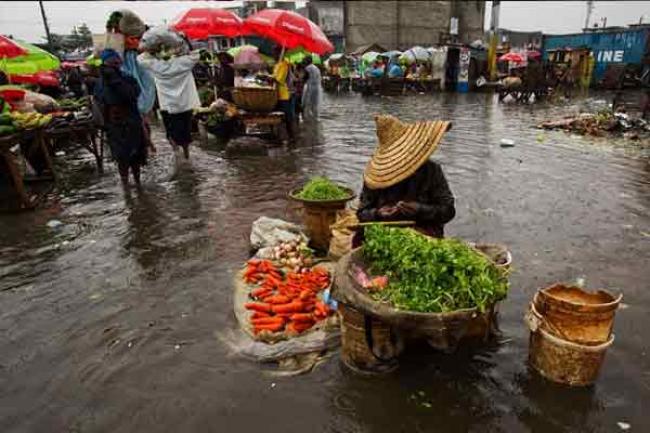Just Earth News 07 Jun 2016

Logan Abassi
Those people include more than 50 million who faced drought. Flooding, earthquakes and hurricanes brought devastating consequences to millions of others in all parts of the world.
According to figures from the UN Office for Disaster Risk Reduction (UNISDR) some 22,773 people died in 346 major reported disasters in 2015.
That includes more than 8,800 who perished in the earthquake that hit Nepal in April.
Experts are meeting in Asuncion, the capital of Paraguay from 8 to 9 June to discuss how to reduce the risks of disasters in the Americas and to consider how the Sendai Framework for Disaster Risk Reduction can be best implemented.
The framework, named after the Japanese city in which it was adopted in March 2015, aims to substantially reduce losses in lives, livelihoods and damage to the environment and focuses both on natural and man-made disasters.
Robert Glasser who heads up UNISDR and who is due to attend the High-Level Ministerial meeting on the Implementation of the Sendai Framework said that “addressing disaster risk is the single most tangible way we can make a difference in the lives of people, vulnerable people around the world, whose vulnerability is generally increasing because of climate change because of population growth and because countries are not incorporating risk in the choices for the investments they are making.”
Experts from the Americas and the Caribbean meeting in Asuncion are due to discuss their own experiences and explore strategies to reduce the risk of disasters and the inevitable deaths that accompany them.
Reducing vulnerability to future disasters is a key element of any strategy.
In 2004, a category three hurricane, known as Hurricane Charley, wrought destruction in Cuba.
Jose Rubiera the Director of the National Forecast Centre on the Caribbean island, said the authorities there decided to reduce the risk of future extreme weather events by moving people away from vulnerable coastal areas.
“What is done in Cuba is to prevent reproducing vulnerability,” he said. “Let’s say you have a town that was destroyed in Hurricane Charley. Well, what has been done is to build the town again away from the coast.”
When a disaster like a hurricane, flood, drought or earthquake strikes, it’s often the poorest people who are hit hardest as they are the most vulnerable.
A landslide in Guatemala in October 2015 killed 627 people and floods in India in the second half of the same year led to more than 600 deaths.
Fadi Hamdan, the Managing Director of the Disaster Risk Management Centre in Beirut, Lebanon said that “disaster risk reduction should be very important for everyone as it is trying to address some of the main challenges facing humanity including the rise in inequality.
“Inequality is manifesting itself in so many different ways,” he added “and these inequalities can only be addressed by also addressing the inequality in the exposure to disasters, inequality in the vulnerability to disasters and inequality in the distribution in disaster losses.”
The High-Level Meeting, to be known as #SendaiAmericas, is the first gathering of Ministers and High-level Authorities on the implementation of the Sendai Framework.
The Framework is a key element of the 2030 Agenda for Sustainable Development which has at its centre 17 targets known as Sustainable Development Goals (SDGs).